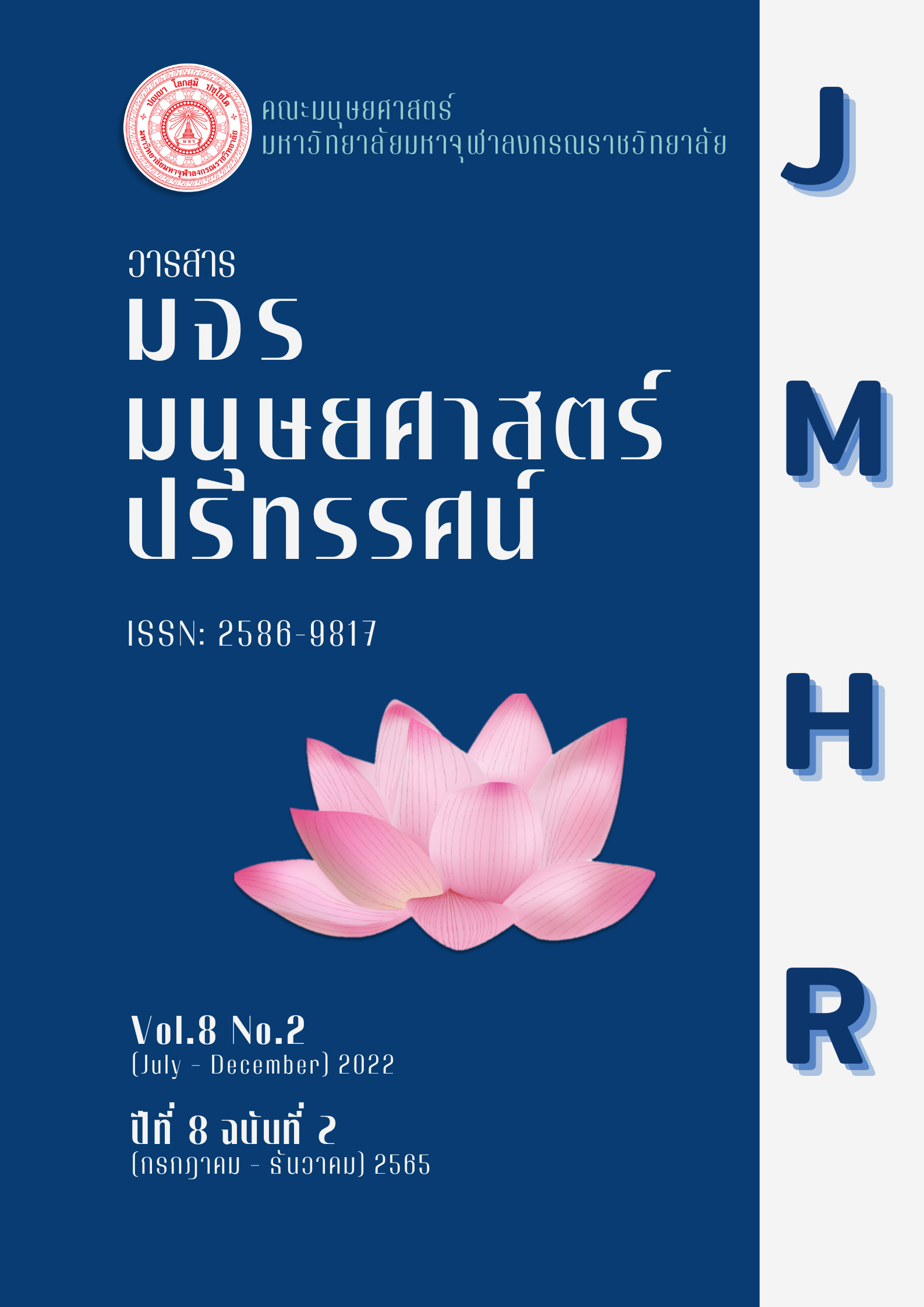ประสบการณ์สัมพันธภาพเพื่อการบำบัดของนักจิตวิทยาการปรึกษา
คำสำคัญ:
สัมพันธภาพเพื่อการบำบัด, นักจิตวิทยาการปรึกษา, กระบวนการปรึกษาบทคัดย่อ
บทความวิจัยนี้มีวัตถุประสงค์ เพื่อศึกษาประสบการณ์สัมพันธภาพเพื่อการบำบัดของนักจิตวิทยาการปรึกษา วิธีดำเนินการวิจัย ผู้วิจัยใช้ระเบียบวิธีการวิจัยเชิงคุณภาพแนวปรากฏการณ์วิทยาเชิงตีความ โดยการเก็บข้อมูลด้วยวิธีการสัมภาษณ์เชิงลึกโดยใช้คำถามกึ่งโครงสร้าง โดยมีผู้เข้าร่วมวิจัยคือนักจิตวิทยาการปรึกษาจำนวน 6 ราย ซึ่งมีประสบการณ์ในการทำงานมาตั้งแต่ 5 ปีขึ้นไปนับตั้งแต่จบการศึกษาระดับมหาบัณฑิตและยังคงให้บริการปรึกษาอยู่ สรุปผลการวิจัยและอภิปรายผลการวิจัย พบประเด็นสำคัญ 4 ประเด็น ได้แก่ 1.กระบวนการสัมพันธภาพเพื่อการบำบัด 2. ความรู้สึกที่เกิดขึ้นในสัมพันธภาพเพื่อการบำบัด 3.ปัจจัยที่ช่วยส่งเสริมในการสังเกตสัมพันธภาพเพื่อการบำบัด และ 4.ลักษณะของสัมพันธภาพเพื่อการบำบัด ข้อเสนอแนะการวิจัย ผลการวิจัยแสดงให้เห็นรายละเอียดสัมพันธภาพเพื่อการบำบัดของนักจิตวิทยาการปรึกษาซึ่งจะเป็นประโยชน์ต่อนักจิตวิทยาการปรึกษาในการรับรู้และตระหนักถึงสัมพันธภาพเพื่อการบำบัดซึ่งเป็นสิ่งสำคัญในกระบวนการบำบัด
เอกสารอ้างอิง
Altimir, C., Capella, C., Núñez, L., Abarzúa, M., & Krause, M. (2017). Meeting in difference: Revisiting the therapeutic relationship based on patients′ and therapists′ experiences in several clinical contexts. Journal of clinical psychology, 73(11), 1510-1522.
Aron, L. (1990). One person and two person psychologies and the method of psychoanalysis. Psychoanalytic psychology, 7(4), 475-485.
Bachelor, A. (1995). Clients' perception of the therapeutic alliance: A qualitative analysis. Journal of Counseling Psychology, 42(3), 323-337.
Bordin, E. S. (1983). A working alliance based model of supervision. The counseling psychologist, 11(1), 35-42.
Bordin, E. S. (1979). The generalizability of the psychoanalytic concept of the working alliance. Psychotherapy: Theory, research & practice, 16(3), 252-260.
Castonguay, L. G., Constantino, M. J., & Holtforth, M. G. (2006). The working alliance: Where are we and where should we go?. Psychotherapy: Theory, Research, Practice, Training, 43(3), 271-279.
Clarkson, P. (2003). The therapeutic relationship. John Wiley & Sons.
Doran, J. M. (2016). The working alliance: Where have we been, where are we going?. Psychotherapy Research, 26(2), 146-163.
Fletcher-Tomenius, L., & Vossler, A. (2009). Trust in online therapeutic relationships: The therapist's experience. Counselling Psychology Review, 24(2), 24-34.
Gelso, C. (2014). A tripartite model of the therapeutic relationship: Theory, research, and practice. Psychotherapy research, 24(2), 117-131.
Hill, C. E., & Knox, S. (2009). Processing the therapeutic relationship. Psychotherapy research, 19(1), 13-29.
Horvath, A. O. (2000). The therapeutic relationship: From transference to alliance. Journal of clinical psychology, 56(2), 163-173.
Kazantzis, N., Cronin, T. J., Dattilio, F. M., & Dobson, K. S. (2013). Introduction: Using techniques via the therapeutic relationship. Cognitive and Behavioral Practice, 20(4), 385-389.
Levy, K. N., Ellison, W. D., Scott, L. N., & Bernecker, S. L. (2011). Attachment style. Journal of clinical psychology, 67(2), 193-203.
Rosenberger, E. W., & Hayes, J. A. (2002). Origins, consequences, and management of countertransference: A case study. Journal of counseling psychology, 49(2), 221-232.
Rowan, J., & Jacobs, M. (2002). The therapist's use of self. McGraw-Hill Education (UK).
Safran, J. D., Muran, J. C., & Eubanks-Carter, C. (2011). Repairing alliance ruptures. Psychotherapy, 48(1), 235-254.
Santirso, F. A., Martín-Fernández, M., Lila, M., Gracia, E., & Terreros, E. (2018). Validation of the Working Alliance Inventory–Observer Short Version with male intimate partner violence offenders. International journal of clinical and health psychology, 18(2), 152-161.
Skovholt, T. M., & Rønnestad, M. H. (2003). Struggles of the novice counselor and therapist. Journal of career development, 30(1), 45-58.
Smith, J. A. (2011). Evaluating the contribution of interpretative henomenological analysis. Health psychology review, 5(1), 9-27.
Sucala, M., Schnur, J. B., Constantino, M. J., Miller, S. J., Brackman, E. H., & Montgomery, G. H. (2012). The therapeutic relationship in e-therapy for mental health: a systematic review. Journal of medical Internet research, 14(4), e2084.
Sullivan, M. F., Skovholt, T. M., & Jennings, L. (2005). Master therapists' construction of the therapy relationship. Journal of Mental Health Counseling, 27(1), 48-70.
Zilcha-Mano, S., Muran, J. C., Hungr, C., Eubanks, C. F., Safran, J. D., & Winston, A. (2016). The relationship between alliance and outcome: Analysis of a two-person perspective on alliance and session outcome. Journal of Consulting and Clinical Psychology, 84(6), 484-496.

ดาวน์โหลด
เผยแพร่แล้ว
รูปแบบการอ้างอิง
ฉบับ
ประเภทบทความ
สัญญาอนุญาต
ลิขสิทธิ์ (c) 2022 วารสาร มจร มนุษยศาสตร์ปริทรรศน์

อนุญาตภายใต้เงื่อนไข Creative Commons Attribution-NonCommercial-NoDerivatives 4.0 International License.





